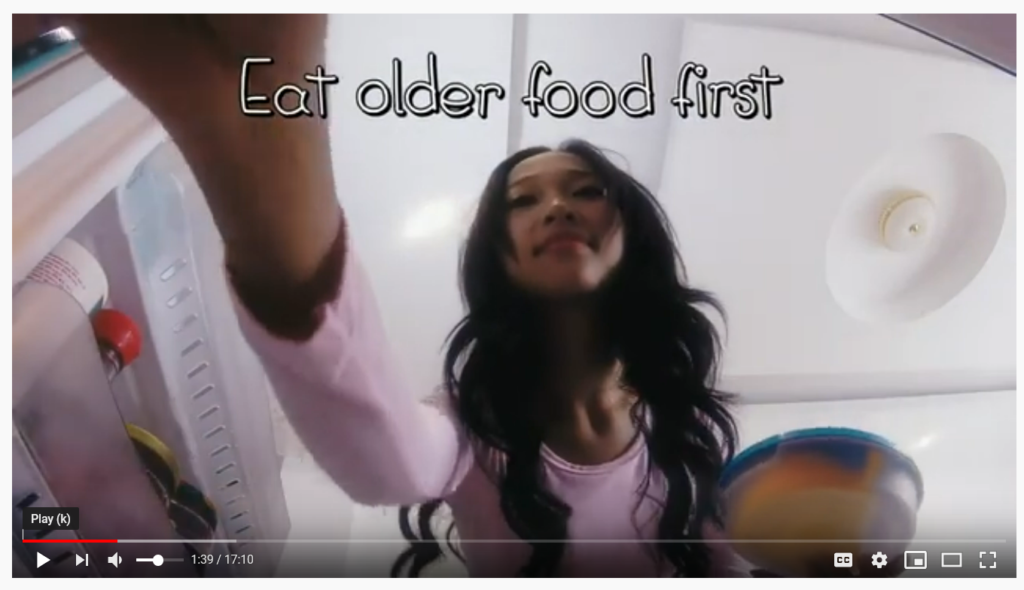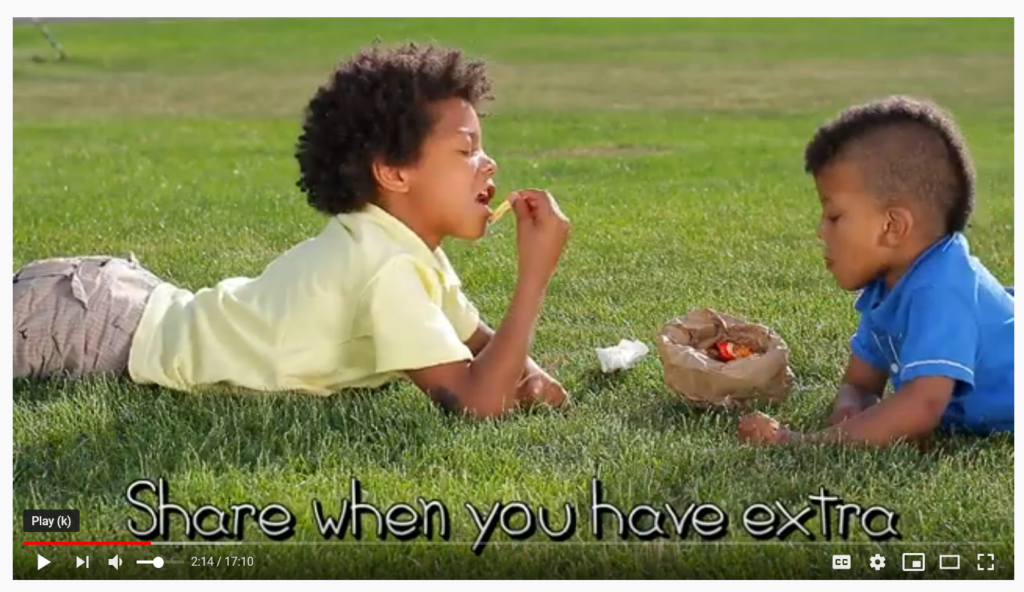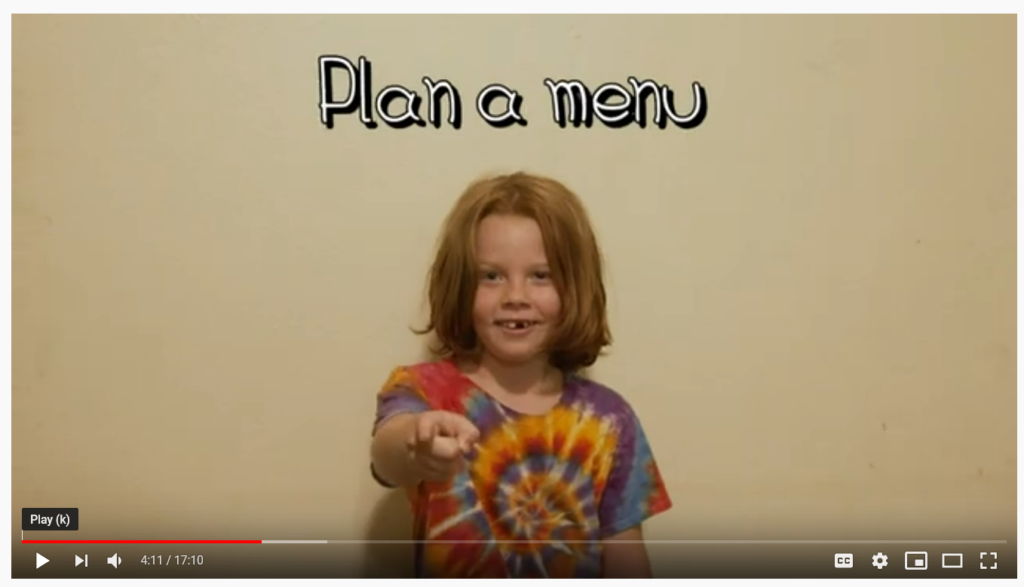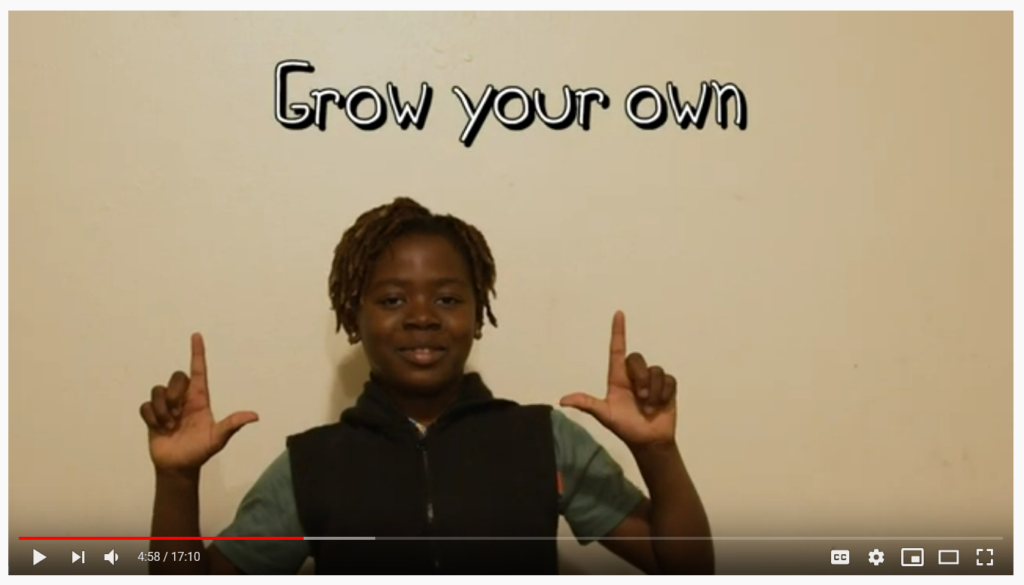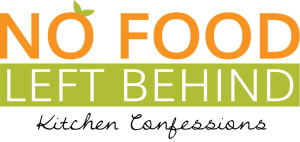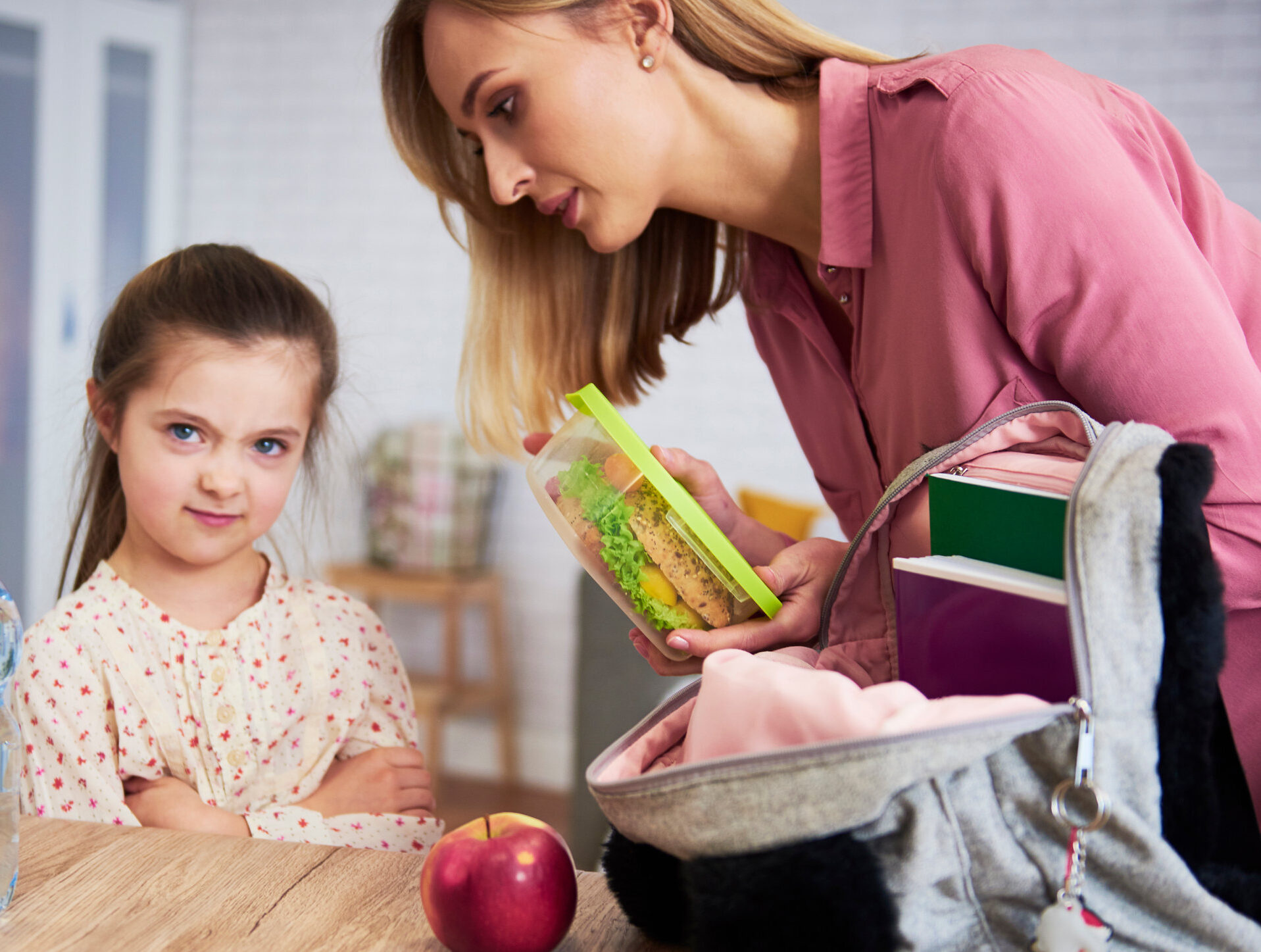Autumn Greetings, Conscientious Food Consumers!
For everyone with children who are physically back in school (K-12) this fall, we hope the adjustment is going well. Students need good quality food to assist them in learning — so HOORAY for all those who help make that happen, including school food service workers, nutrition program administrators, and all the parents, relatives or caregivers who make lunches to-go for their kiddos!
If prepping and fixing healthy school-day lunches is on your daily to-do list — and especially if you’ve got a picky eater or two (like the one in our cover photo) — here’s a few suggestions we hope you will find helpful and save you $$:
- Involve kiddos in the preparation of their own lunches occasionally, as appropriate for their age(s). It’s an ideal time for them to learn about safe food prep and storage, as well as getting in the habit of using the “Eat First!” shelf in the fridge or pantry. They’ll probably love picking things out and helping you plan the week. My son enjoyed making, and eating, “Ants On A Log,” stuffed celery sticks topped with raisins or cranberries.
BONUS: When kids help make their lunches, they’ll probably end up wasting less of them!
- Speaking of food safety, here’s a great infographic (in English and Spanish) from the USDA.
- Check out the colorful, kid-friendly recipes and resources at Food Hero.org (OSU Extension Service).
- Do a nightly lunch box “waste audit” together!
- Replace (as much as possible) single-serving, plastic-packaged convenience foods with reusable containers or lunch totes with compartment trays that you load up yourself.
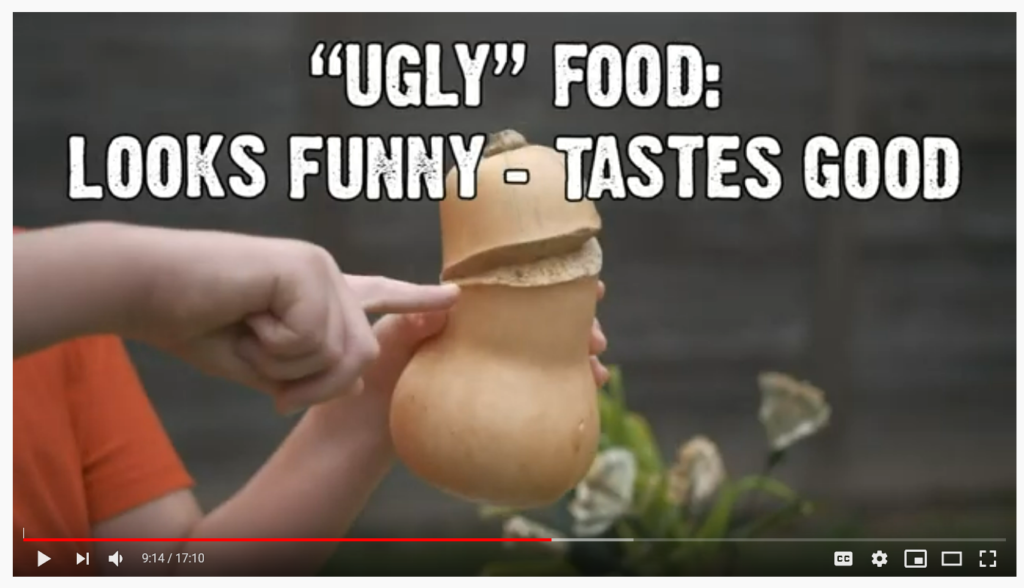
Sustainable food habits will serve children for the rest of their lives. That’s a key takeaway from a recent Kitchen Confessions supporting all of you who are training our young future chefs and Conscientious Consumers. Thanks for all you do!
AT SCHOOL LUNCHTIME, KIDS CAN:
- Learn to appreciate everything that goes into their food, from precious natural resources to the human labor that produced it. NFLB’s new videos (mentioned below) introduce kids to real farm workers, including some here in Benton County at Gathering Together Farm;
- Eat “ugly food” — like funny-shaped or bruised produce — because it still tastes great;
- Whether bringing or buying lunch, remember to “Take-What-You-Can-Eat / Eat-What-You-Take!”
- Enjoy sharing food they can’t or won’t eat. Fortunately, Corvallis school lunchrooms have Sharing Tables, where students can leave certain kinds of unconsumed food items (whole fruit or unopened packages) rather than tossing them in the compost or trash.
Here’s an overview of sustainable lunchroom practices from Oregon Green Schools.
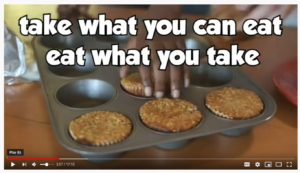
KAREN CONFESSES: Back when I fixed lunches for my kid, I tended to pack more than he could eat. I was so anxious about proper nourishment for his growing body! Eventually I learned that he was using his lunch period more for socializing than eating (which also meant by the time he got home from school, he was super hungry).
Of course, the remnants in his lunch tote that were beyond rescue ended up in the compost. But now I wish I had been more conscious — and taught him more conscientiously — about the true value of that wasted food!
I also used my share of plastic wrap, snack baggies that couldn’t be reused, and over-packaged “convenience” food products.
$$$ WASTED: under $10/week? (Now I really wish I had kept track.)
LESSON LEARNED: Being conscious about wasted food is an every day exercise — whether it’s a school lunch or a full-blown family meal. And the earlier the better, when it comes to teaching kids! HOWEVER, I did get the benefit of insight from almost-nightly “waste audits” of his lunch box, where he tended to dump everything — peels, gooey plastic wrap, empty mini tubs of cream cheese, and all.
Now my kid is no longer a kid, and he fixes his own lunch for work. He says he doesn’t waste much by keeping it simple and packing just a few items that he’s sure will be consumed. Hooray! Somehow he did learn to “take what you can eat/eat what you take!” — as my colleague Kjersten sings in one of her Eco-Edutainment pieces.
*****
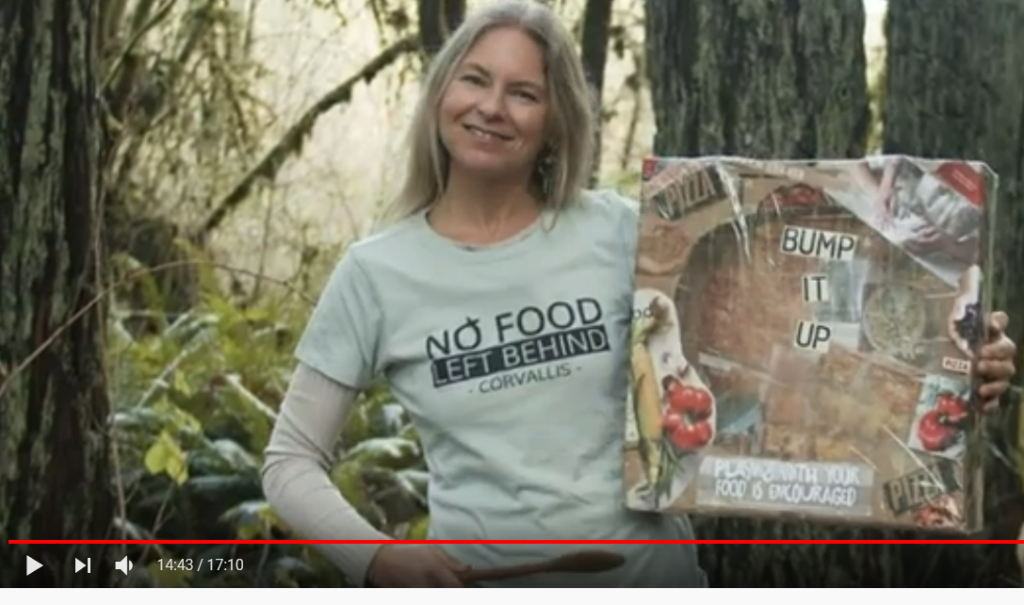
NEW VIDEOS HELP STUDENTS LEARN WHY & HOW TO WASTE LESS
No Food Left Behind is super-excited to soon roll out its first-ever “Eco-Edutainment” video lesson (in both English and Spanish) for Corvallis area fourth and fifth grade students, developed by our educational specialist Kjersten Hallin. Before the pandemic, Kjersten delighted kids with her creative in-classroom, interactive performances, helping teachers meet district and state education standards in core educational areas.
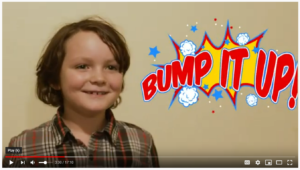 In late 2020, Kjersten began the challenging task of digitizing her educational presentations into a 45-minute lesson for teachers and students. This lesson in three videos transforms facts into an inspiring mix of catchy raps and songs, graphics and claymation animation, as well as peer-group student actors, to motivate kids to make a commitment to waste less every day.
In late 2020, Kjersten began the challenging task of digitizing her educational presentations into a 45-minute lesson for teachers and students. This lesson in three videos transforms facts into an inspiring mix of catchy raps and songs, graphics and claymation animation, as well as peer-group student actors, to motivate kids to make a commitment to waste less every day.
NFLB’s new Eco-Edutainment videos will be available to educators this term – links coming soon! Check out a 3-minute promo and other details on our website.
*****
Eco-Edutainment video teasers:

